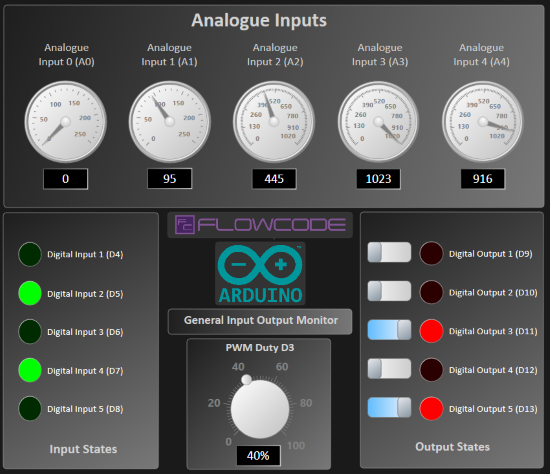Difference between revisions of "Examples and Tutorials"
| Line 1: | Line 1: | ||
==Introduction to Microcontrollers Course== | ==Introduction to Microcontrollers Course== | ||
| − | We recommend going through the Flowcode section of the [ | + | We recommend going through the Flowcode section of the [https://www.matrixtsl.com/resources/files/datasheets/Microcontroller%20compete%20course.pdf| Introduction to microcontrollers Course] course which has been updated for the latest version of Flowcode and is available for free at the learning center section on the main [http://www.matrixtsl.com www.matrixtsl.com] website. |
| − | |||
==Embedded== | ==Embedded== | ||
Revision as of 12:18, 24 July 2023
Contents
Introduction to Microcontrollers Course
We recommend going through the Flowcode section of the Introduction to microcontrollers Course course which has been updated for the latest version of Flowcode and is available for free at the learning center section on the main www.matrixtsl.com website.
Embedded
Heat Control - Coarse
lots of modern electronic systems include some form of simple closed loop heat control to function. Some examples include a kitchen oven, a microwave oven, an iron, hair straighteners, electric heater, etc.
These devices typically work by monitoring the temperature and then switching on a heating element when the temperature is less then the required temperature. The element is then switched off again when the required temperature is reached.
The electronics involved could be a microcontroller digital output pin connected to a simple transistor, diode and relay to control the heater element and a thermistor to measure the heat.
Heat Control - Fine
More advanced electronic systems may require a bit more fine control of the temperature to avoid overshoot and improve response to load changes. Some examples include a SMD reflow oven, 3D printer hotend, soldering iron, etc.
These devices typically work by monitoring the temperature and then providing an analogue output to a heating element. The analogue value is calculated using a transfer function in this case we are using PID control.
The electronics involved could be a microcontroller PWM output pin connected to logic level FET or TRIAC to control the heater element and a thermocouple to measure the heat.
App Developer
A range of example App Developer projects are available from here: https://www.flowcode.co.uk/app-developer/free-apps/
Scenarios
This page contains a list of the scenarios included with Flowcode.
The corresponding components can be found in the Runtime section of the component toolbar.
